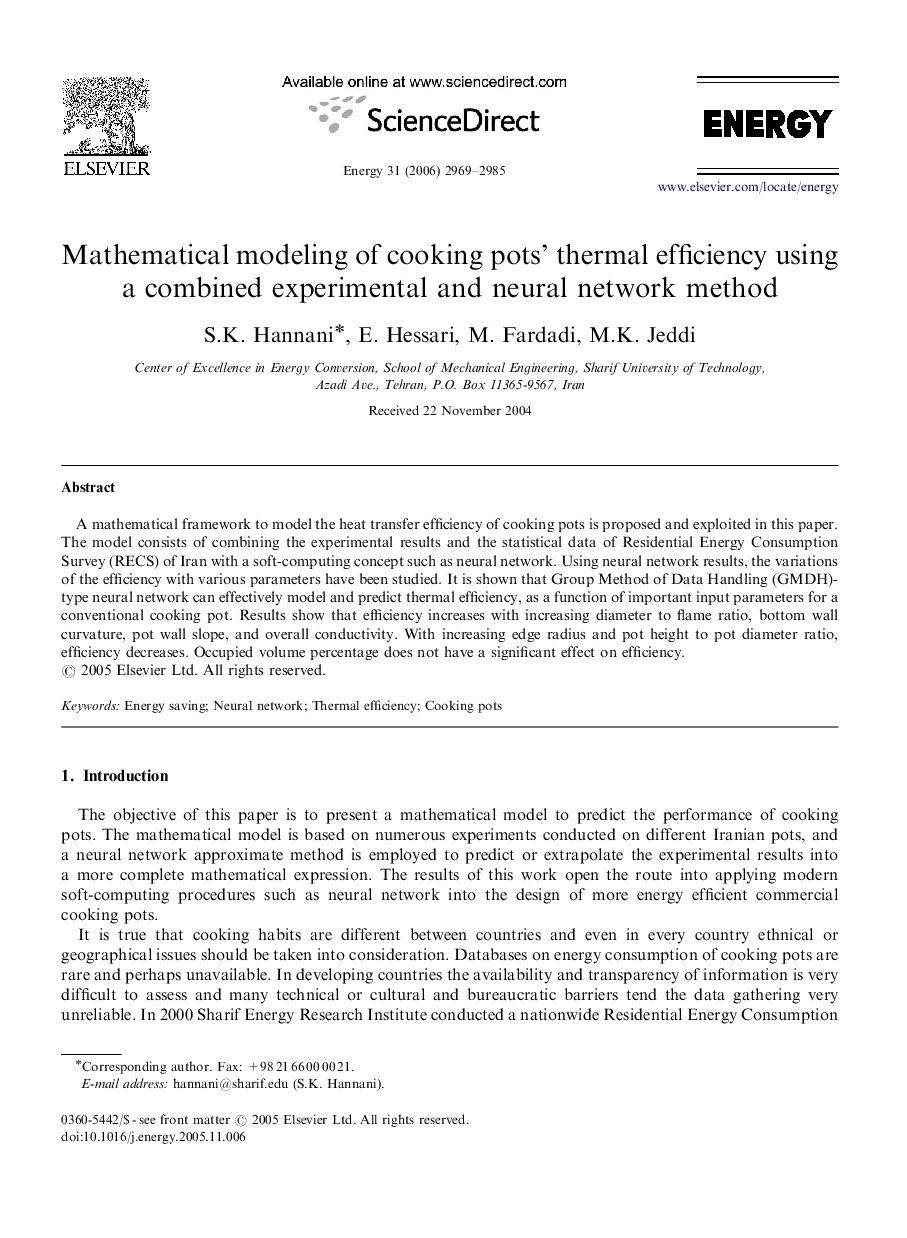| کد مقاله | کد نشریه | سال انتشار | مقاله انگلیسی | نسخه تمام متن |
|---|---|---|---|---|
| 1736331 | 1016213 | 2006 | 17 صفحه PDF | دانلود رایگان |

A mathematical framework to model the heat transfer efficiency of cooking pots is proposed and exploited in this paper. The model consists of combining the experimental results and the statistical data of Residential Energy Consumption Survey (RECS) of Iran with a soft-computing concept such as neural network. Using neural network results, the variations of the efficiency with various parameters have been studied. It is shown that Group Method of Data Handling (GMDH)-type neural network can effectively model and predict thermal efficiency, as a function of important input parameters for a conventional cooking pot. Results show that efficiency increases with increasing diameter to flame ratio, bottom wall curvature, pot wall slope, and overall conductivity. With increasing edge radius and pot height to pot diameter ratio, efficiency decreases. Occupied volume percentage does not have a significant effect on efficiency.
Journal: Energy - Volume 31, Issue 14, November 2006, Pages 2969–2985